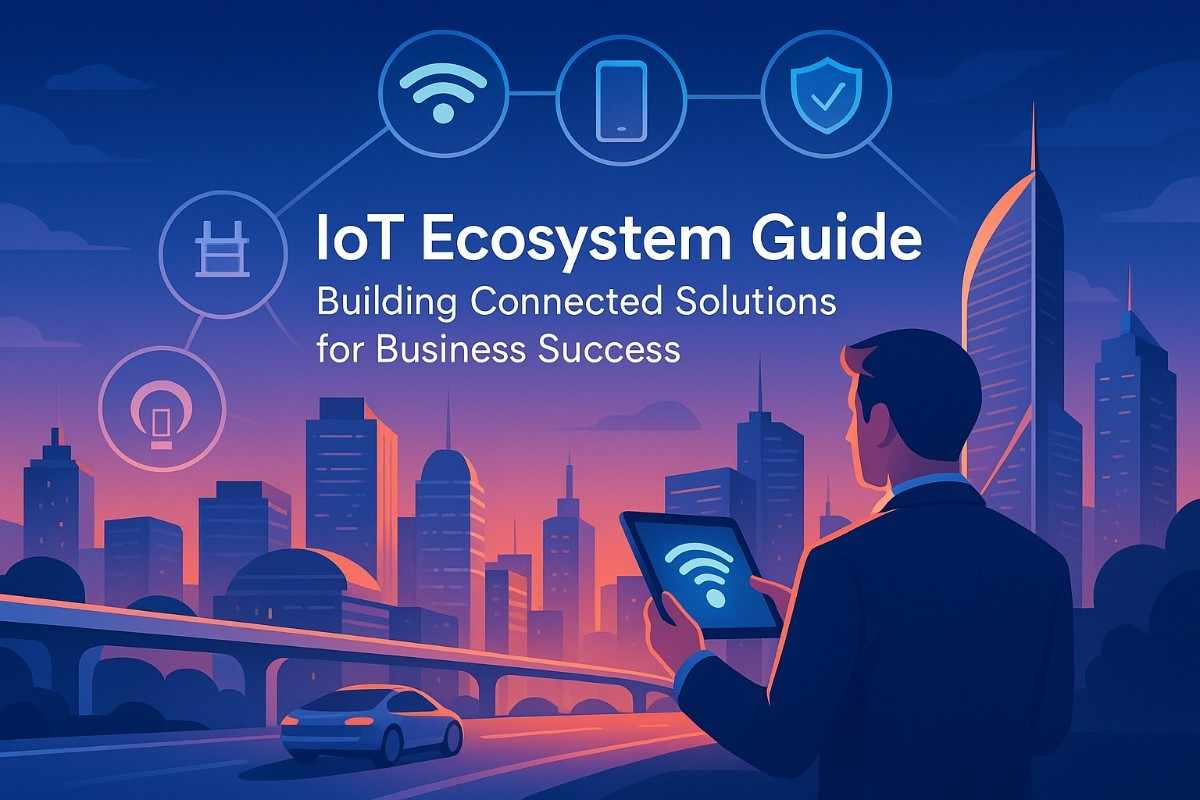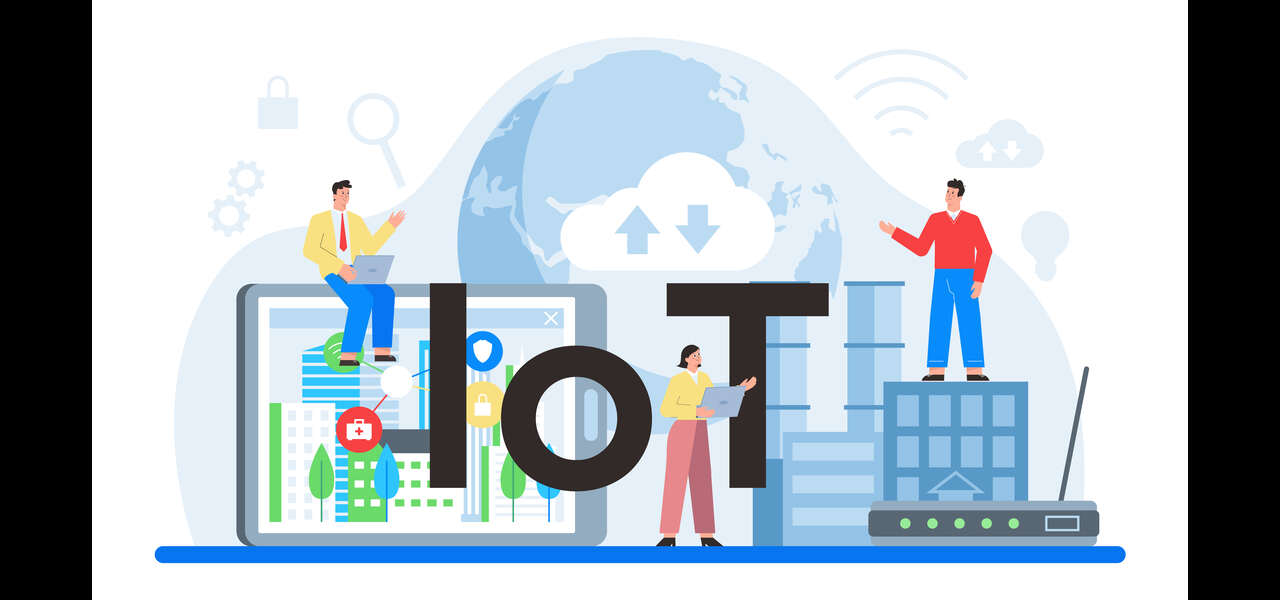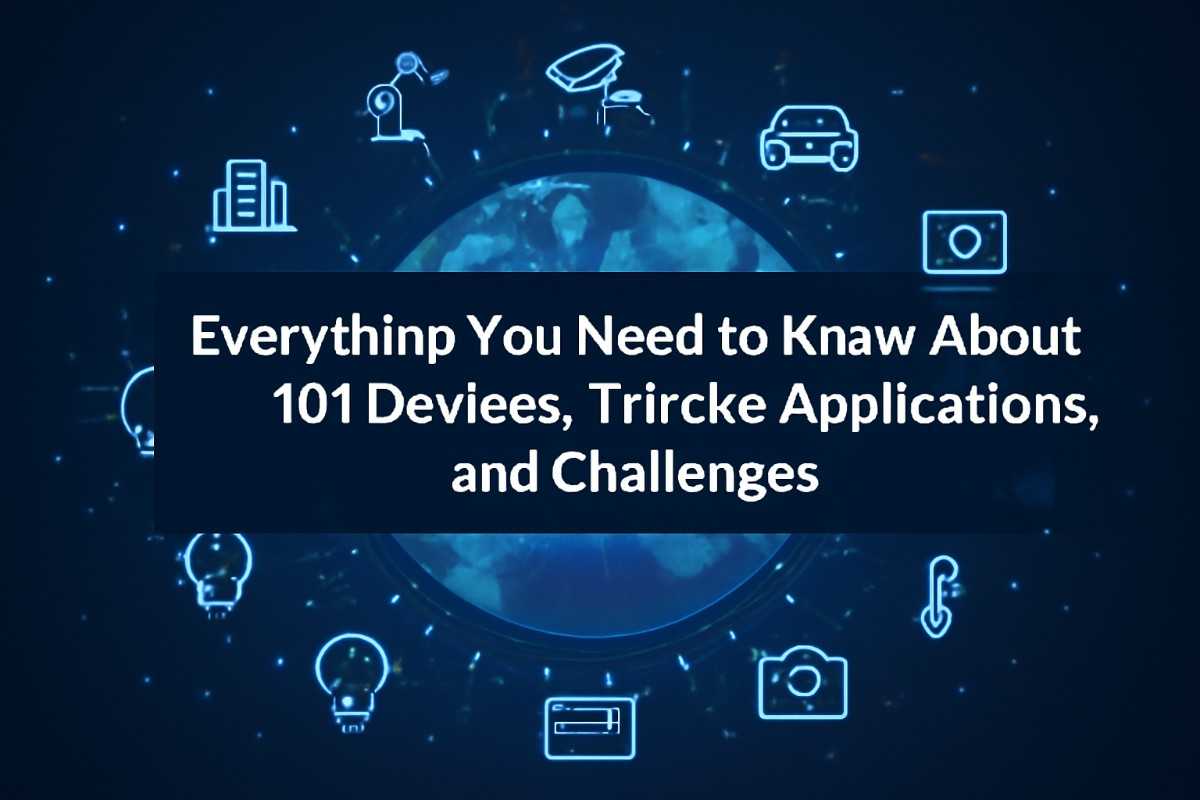Imagine walking into your office where the lights automatically adjust to your preference, the air conditioning optimizes based on occupancy, and machinery predicts maintenance needs before breakdowns occur. This isn’t science fiction – it’s the IoT ecosystem transforming businesses worldwide. With over 18.8 billion connected devices expected by the end of 2024, understanding how to build effective connected solutions has become crucial for business success.
The Internet of Things represents more than just connecting devices to the internet. It’s about creating intelligent ecosystems where data flows seamlessly between sensors, applications, and decision-makers, enabling unprecedented levels of automation and insight.
An IoT ecosystem consists of interconnected components working harmoniously to collect, process, and act on data. Think of it like a well-orchestrated symphony where each instrument plays its part in creating beautiful music.
The foundation starts with smart sensors and actuators. Sensors capture real-world data – temperature, humidity, motion, pressure – while actuators respond by taking physical actions like opening valves or adjusting settings. These devices form the sensory system of your connected environment.
Connectivity layers ensure data flows efficiently between devices and cloud platforms. Whether through Wi-Fi, cellular networks, Bluetooth, or specialized protocols like Zigbee, this component transforms isolated devices into a connected network.
The Four-Layer IoT Devices Architecture Model
Modern IoT implementations follow a structured four-layer approach that ensures scalability and efficiency:
Sensing Layer: The physical foundation where sensors and actuators interact with the real world, gathering environmental data and executing commands.
Network Layer: The communication backbone enabling devices to connect and share information through various protocols and technologies.
Data Processing Layer: Where raw sensor data transforms into meaningful insights through analytics platforms and machine learning algorithms.
Application Layer: The user-facing interface that presents information and enables control over the entire system.
This layered architecture ensures that each component can be optimized independently while maintaining seamless integration across the entire system.
Essential Building Blocks of Connected Devices
Smart Sensors and Actuators
The heart of any IoT devices deployment lies in its sensors and actuators. Modern sensors can detect an impressive range of environmental factors – from basic temperature and humidity to complex chemical compositions and motion patterns.
Consider a smart manufacturing facility where vibration sensors monitor machine health, temperature sensors ensure optimal operating conditions, and optical sensors track product quality. These devices work together, creating a comprehensive monitoring network that enables predictive maintenance and quality control.
Actuators complete the feedback loop by taking action based on sensor data. When a temperature sensor detects excessive heat, an actuator can automatically activate cooling systems, preventing equipment damage and maintaining optimal conditions.
Connectivity and Communication Protocols
Choosing the right connectivity solution depends on your specific use case requirements. Wi-Fi works well for high-bandwidth applications in controlled environments, while cellular networks provide wide-area coverage for remote monitoring applications.
For low-power, long-range applications, specialized protocols like LoRaWAN or Sigfox offer excellent battery life and coverage. Bluetooth and Zigbee excel in short-range, low-power scenarios like smart home applications.
Edge Computing Integration
Edge computing represents a crucial evolution in IoT architecture, bringing processing power closer to where data is generated. Instead of sending all sensor data to distant cloud servers, edge devices can process information locally, reducing latency and improving response times.
This approach proves invaluable in safety-critical applications. For instance, an industrial edge device monitoring machine vibrations can immediately shut down equipment when dangerous patterns are detected, preventing accidents without waiting for cloud-based analysis.
Business Applications Transforming Industries
Manufacturing and Predictive Maintenance
Manufacturing leads IoT adoption with compelling use cases that deliver immediate value. Predictive maintenance stands out as a game-changer, using sensor data to predict equipment failures before they occur.
Smart sensors continuously monitor machine vibrations, temperature, and performance metrics, sending data to analytics platforms that identify patterns indicating potential problems. This approach reduces downtime by up to 50% and extends equipment life significantly.
Digital twins take this concept further, creating virtual replicas of physical manufacturing processes. These digital models help optimize operations, train employees safely, and test improvements without disrupting production.
Supply Chain Optimization
IoT devices revolutionize supply chain visibility and efficiency. GPS trackers monitor shipment locations in real-time, while environmental sensors ensure products remain within optimal temperature and humidity ranges during transport.
Automated inventory tracking systems use RFID tags and sensors to maintain accurate stock levels, automatically triggering reorders when supplies run low. This automation reduces human error and ensures smooth operations across complex supply networks.
Healthcare and Financial Services
Healthcare applications showcase IoT’s life-saving potential. Wearable devices monitor patient vital signs continuously, alerting medical staff to dangerous changes before emergencies develop. Smart hospital equipment tracks utilization and performance, ensuring critical devices remain operational when needed most.
Financial services leverage IoT security solutions for fraud detection and prevention. Transaction monitoring systems analyze patterns across connected point-of-sale devices and ATMs, identifying suspicious activities and preventing unauthorized access.
IoT Implementation Challenges and Solutions
Security and Privacy Concerns
IoT security remains the top concern for businesses implementing connected solutions. With billions of connected devices creating potential entry points for attackers, robust security measures are essential.
Encryption forms the foundation of IoT security. Both data in transit and at rest require protection through advanced encryption standards. Multi-factor authentication ensures only authorized devices and users can access your IoT network.
Network segmentation provides additional protection by isolating IoT devices from critical business systems. This approach limits potential damage if devices become compromised, preventing lateral movement across your network.
Integration with Legacy Systems
Most businesses face the challenge of integrating modern IoT devices with existing legacy systems. This compatibility gap can prevent organizations from realizing IoT’s full potential.
Open-source IoT platforms offer flexible solutions for bridging these gaps. These platforms support multiple communication protocols and can adapt to various system requirements, ensuring smooth integration without expensive infrastructure overhauls.
API-based integration provides another pathway, allowing IoT data to flow into existing business applications through standardized interfaces. This approach enables gradual IoT adoption without disrupting current operations.
Scalability and Compatibility Issues
The fragmented IoT landscape presents significant compatibility challenges. Different vendors often use proprietary technologies and protocols, making it difficult to create cohesive solutions.
Standardized protocols and open platforms help address these issues by providing common communication frameworks. Organizations should prioritize solutions that support multiple standards and can adapt to changing requirements as they scale.
Edge computing also supports scalability by distributing processing power and reducing bandwidth requirements. This approach enables organizations to expand their IoT deployments without overwhelming central systems.
Measuring ROI and Business Value
Key Performance Indicators for IoT Success
Measuring IoT ecosystem ROI requires identifying specific, quantifiable metrics that align with business objectives. Operational efficiency improvements often provide the most measurable returns through reduced downtime, lower maintenance costs, and improved productivity.
Asset utilization metrics track how effectively equipment and resources are being used. IoT sensors can provide detailed usage data, helping optimize operations and identify underutilized assets.
Cost reduction measurements include energy savings, reduced labor costs, and minimized waste. Smart building systems, for example, can reduce energy consumption by 20-30% through intelligent climate control and lighting management.
Cost-Benefit Analysis Framework
Successful ROI calculation requires establishing clear baselines before IoT implementation. Organizations should document current performance levels across key metrics to measure improvement accurately.
Testing phases provide valuable data for refining ROI calculations. Pilot projects help validate assumptions and provide real-world performance data before full-scale deployment.
Continuous monitoring ensures ROI calculations remain accurate over time. Regular assessment helps identify areas where the IoT solution is exceeding or falling short of expectations, enabling adjustments to maximize value.
Future Trends Shaping IoT Business Solutions
AI-Powered Autonomous Systems
The convergence of artificial intelligence and IoT creates AIoT – a powerful combination that enables truly autonomous systems. AI algorithms process the massive data streams generated by IoT sensors, identifying patterns and making decisions without human intervention.
Autonomous vehicles demonstrate this capability in action, using IoT sensors and AI to navigate roads safely. Similar technologies are emerging in manufacturing, where autonomous robots coordinate production activities and adapt to changing conditions.
Predictive analytics powered by AI transforms IoT from reactive to proactive systems. Instead of simply alerting when problems occur, these systems predict issues before they develop, enabling preventive action.
Blockchain Integration for Security
Blockchain technology addresses critical IoT security challenges by providing immutable transaction records and device authentication. This combination ensures data integrity and prevents unauthorized device access.
Smart contracts enable automated responses to IoT data without human intervention. For example, a blockchain-based system could automatically process payments when delivery sensors confirm package arrival, streamlining logistics operations while maintaining security.
Sustainability-Focused Innovations
Environmental consciousness drives IoT innovation toward sustainability solutions. Smart energy management systems optimize power consumption across facilities, reducing costs and environmental impact.
Water management applications use IoT sensors to detect leaks immediately and monitor usage patterns, promoting conservation. Air quality monitoring systems provide real-time pollution data, enabling quick responses to protect public health.
Smart agriculture implementations help farmers optimize irrigation, reduce pesticide use, and improve crop yields while minimizing environmental impact.
Best Practices for Building Your IoT Strategy
Planning and Implementation Guidelines
Successful IoT ecosystem implementation starts with clear business objectives. Define specific problems you want to solve and measurable outcomes you expect to achieve. This clarity guides technology selection and helps justify investment.
Start small with pilot projects that demonstrate value before scaling. Choose applications with clear ROI potential and manageable complexity to build confidence and expertise.
Partner selection proves crucial for success. Work with experienced IoT providers who understand your industry challenges and can provide comprehensive solutions rather than just technology components.
Security Framework Development
Security by design must be embedded throughout your IoT strategy. Implement multi-layered security approaches that protect devices, communications, and data storage.
Regular updates and patch management ensure IoT devices remain secure as new threats emerge. Establish procedures for monitoring security alerts and applying updates promptly.
Incident response planning prepares your organization for potential security breaches. Define clear procedures for isolating compromised devices and restoring normal operations.
Conclusion
The IoT ecosystem represents a transformative opportunity for businesses willing to embrace connected solutions strategically. From manufacturing efficiency gains to predictive maintenance capabilities, IoT delivers measurable value across industries. Success requires understanding the architectural foundations, addressing implementation challenges proactively, and maintaining focus on business outcomes rather than technology for its own sake.
As we move toward an increasingly connected future, organizations that master IoT implementation will gain significant competitive advantages. The key lies in starting with clear objectives, implementing robust security measures, and scaling thoughtfully based on proven results. Whether you’re optimizing supply chains, improving customer experiences, or reducing operational costs, IoT provides the tools to transform your business vision into reality.
For more insights on digital transformation strategies, explore our comprehensive guides on Smart Home Automation Protocols, Edge Computing & 5G, and Complete Guide to No-Code/Low-Code Development.
FAQs
Q: What are the main components of an IoT ecosystem?
A: An IoT ecosystem consists of four main components: sensing layer (sensors and actuators), network layer (connectivity protocols), data processing layer (analytics and cloud platforms), and application layer (user interfaces and business applications). Each layer works together to collect, transmit, process, and act on data from connected devices.
Q: How can businesses measure ROI from IoT implementations?
A: IoT ROI measurement focuses on quantifiable metrics like reduced downtime, operational cost savings, improved productivity, and enhanced asset utilization. Establish baseline measurements before implementation, conduct pilot projects to validate assumptions, and continuously monitor performance against defined KPIs to accurately assess business value.
Q: What are the biggest security challenges in IoT deployment?
A: Major IoT security challenges include device authentication, data encryption, network segmentation, and managing updates across numerous connected devices. Solutions involve implementing multi-layered security approaches, using strong encryption protocols, isolating IoT networks from critical systems, and establishing comprehensive device management procedures.
Q: How do I choose the right connectivity protocol for my IoT project?
A: Connectivity protocol selection depends on factors like range requirements, power consumption, bandwidth needs, and deployment environment. Wi-Fi suits high-bandwidth indoor applications, cellular networks work for wide-area coverage, while specialized protocols like LoRaWAN or Zigbee excel in low-power, long-range scenarios. Consider your specific use case requirements when making this decision.



